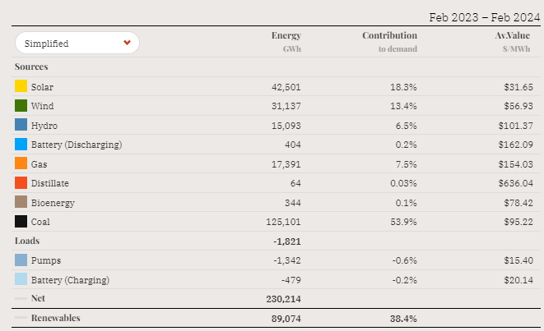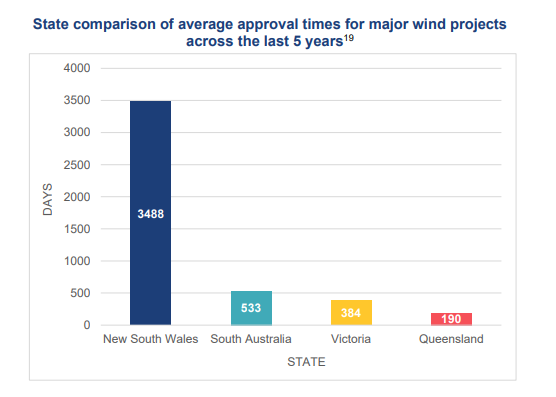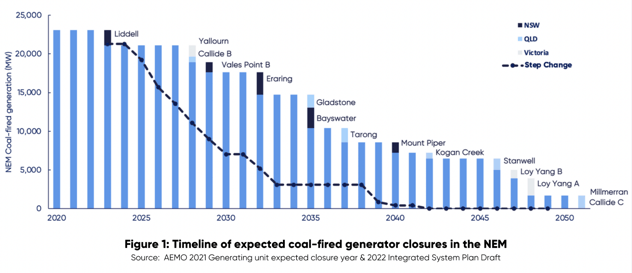Jack Colreavy
- Feb 13, 2024
- 6 min read
ABSI - Renewable Red Tape: Something’s Gotta Give
Every Tuesday afternoon we publish a collection of topics and give our expert opinion about the Equity Markets.

At the end of 2023, some good news emerged in the Australian renewable energy sector with the planning approval of the 1,500MW Yanco Delta wind farm. However, taking the shine off the green light was the fact that this was the first wind farm project approved in NSW in circa 2.5 years. Noteworthy, this isn’t just a NSW issue with similar trends nationwide. ABSI this week will confront the issue of red tape in renewables to determine whether it is warranted or creating chaos in achieving renewable energy targets in Australia.
Australia has legislated ambitious emission targets which include net zero by 2050 and a 43% reduction, on 2005 levels, by 2030. As part of this set of targets is the need for Australia’s electricity generation to be 82% renewable by 2030. In 2023, ~38.4% of demand was supplied by renewables, so with 6 years to go, we’re only ~47% of the way there. Looking closer at the sources of renewable energy, solar is the biggest contributor (18.3%), thanks to Australia's high penetration of rooftop solar by households (11.7%), while wind ranks second (13.4%) and hydro rounds out the top three (6.5%). Coal continues to decline thanks to the closure of the Liddell Coal Power Station in 2023.
Source: Open NEM
Given the targets and the current shape of the energy market, you would think that state and federal governments would be moving mountains to get new renewable energy assets online as soon as possible. Unfortunately, that hasn’t been the case with a long pipeline of renewable energy projects stuck in bureaucracy hell. A recent report, published by the Clean Energy Investor Group (CEIG), concludes that over the past five years, major DA approvals for clean energy projects in NSW have averaged 746 days for State Significant Developments including 3,488 days (9.5 years) for wind, 705 days for solar, and 530 days for batteries.
Source: CEIG
The reasons for these shocking statistics are vast and the details go beyond the scope of this article, but the top three reasons for the impasse appear to be:
- Too much bureaucracy/red tape
- Lack of community support (NIMBYism)
- Structural issues in the supply of labour and equipment.
Albert Einstein once said that “bureaucracy is the death of all sound work”. These words of wisdom hold true in Australia’s renewable energy ambitions. The overly onerous requests for information from multiple agencies and the cost/time to produce documents are not only holding up the advancement of renewable construction but are also turning off investors who are increasingly looking elsewhere.
It is important to note, that while renewable energy projects are great for emission-free electricity generation, they may not be great for the overall environment. These large energy projects, particularly wind farms, have a material impact on the natural environment, making the need for Environmental Impact Studies (EIS) very important. It is vital to ensure that energy infrastructure doesn’t impact endangered wildlife and important landmarks. However, there is mounting frustration in the renewable industry that they’re being held to a higher standard than fossil fuels. We shouldn’t cut off our noses to spite our faces; it is impossible to avoid all environmental impacts but there needs to be a higher level of what is acceptable in the interest of the broader goal of reducing emissions.
Source: Blueprint Institute
Outside of government, the community plays a huge role in the viability of a renewable energy project. While support for renewable energy is relatively high, an AFR poll puts solar support at 81% and wind at 57%, there is a growing trend of community hostility to project approvals. Some of the hostility is political in nature, whereas other aspects involve grappling with the transition from a centralised to a decentralised energy model through distributed energy. For a renewable energy grid to be viable, we need every community in Australia to share the load in hosting new energy generation and transmission. Likewise, developers and government can ease NIMBY fears through better communication, improved planning processes and better outlets for handling complaints as recommended by the Australian Energy Infrastructure Commissioner.
A quick detour to announce the BPC NRL Tipping Competition!
Welcome to the BPC NRL Tipping Competition for 2024. The season is set to kick off with a bang in the glittery lights of Las Vegas. Panthers are favorites to take the crown again but the Broncos look like a formidable opponent to take revenge from the heartbreak of 2023. BPC loves its footy and we're very excited for the season ahead. We also love to win stuff so please keep an eye out for the prizes on offer when announced. Until then, sign up and get tipping for Round 1.
Most research supports the thesis that Australia is falling behind its renewable energy goals. The goals were ambitious in the first place but that doesn’t excuse the impending failure. Frustratingly the root cause isn’t for lack of money, but instead due to an entangled web of planning bureaucracy that is adding precious years to a process that can be streamlined. I am not advocating for dropping all planning regulations but surely there is a better way than having to navigate almost 10 years to get planning approval for a wind farm. It's time for state and federal governments to stop awarding grants and to start cutting red tape.
We offer value-rich content to our BPC community of subscribers. If you're interested in the stock market, you will enjoy our exclusive mailing lists focused on all aspects of the market.
To receive our exclusive E-Newsletter, subscribe to 'As Barclay Sees It' now.
Share Link










